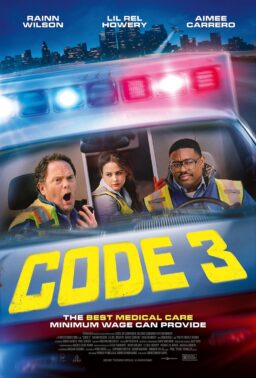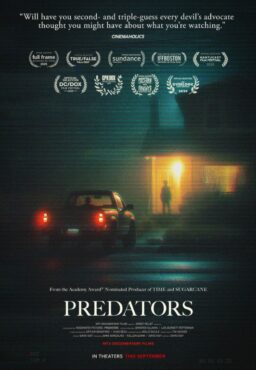The memorial for film scholar David Bordwell was as funny, erudite, and thorough as the master’s own writing on cinema. Organized by his widow and regular writing partner Kristin Thompson, it was also an example of a type of storytelling that David coined a term to describe: the “network narrative.”
As David wrote in a 2006 post on his and Kristin’s blog Observations on Film Art:
“The central formal principle is that several protagonists are given more or less the same weight as they participate in intertwining plotlines. Usually these lines affect one another to some degree. The characters might be strangers, slight acquaintances, friends, or kinfolk. The film aims to show a larger pattern underlying their individual trajectories.”
By way of illustration, David often cited films by directors like Richard Linklater (“Slacker” “Dazed and Confused”), Robert Altman (“Nashville,” “Short Cuts”), Paul Thomas Anderson (“Boogie Nights,” “Magnolia”) and Spike Lee (“Do the Right Thing,” “Summer of Sam”), as well as TV dramas like “The Wire” and “ER” that are organized around communities and institutions. Members of such fictional community are rarely all brought together unless it’s to bear witness to something much greater than any one of them, such as the earthquake at the end of “Short Cuts” or the rain of frogs in “Magnolia.”
Or losing David.
Dozens of trajectories converged at his service last weekend. It happened at Cress Funeral Home in Madison, Wisconsin, not far from the University of Wisconsin-Madison campus where he and Kristin were based—David as a film professor and department head, Kristin as an Honorary Fellowship in the Dept. of Communication Arts. In that room were gathered filmmakers, film critics, historians, programmers, archivists, and former students, with much Venn diagram overlap between categories. They came from all over. There would have been even more, packing an already-full house to bursting, if the Cannes Film Festival hadn’t been happening simultaneously.
“David used his platform and prominence to bring visibility to the work and ideas of others involved in the ecosystem of cinema, including filmmakers, critics, scholars, archivists, and programmers,” said University of Wisconsin-Madison film and media studies professor Eric Hoyt, addressing a room that proved his assertion and then some. “These were acts of generosity and support.”
The word “ecosystem” is key. David was part of it, and helped grow it: globally, nationally, and locally.
The community of Madison-area film professors, students, administrators, and programmers, past and present, was well-represented. “Such a lovely gathering,” James Schamus, Columbia University professor, former studio head (Focus Features), and Oscar-winning screenwriter (of “Brokeback Mountain”), told me afterward. “I’d say one of David’s least heralded accomplishments was the co-creation of a truly collegial academic cohort at Madison; his memorial was rightfully as much a celebration of it as it was [of David] by his colleagues.”
David’s relentless encouragement of seemingly every movie buff he ever read, worked with, corresponded with, or met only once kept coming up.
Jeff Smith, a University of Wisconsin-Madison film professor who collaborated with David and Kristin, talked about a conversation between him and David in which Smith drew connections between a scene in Joel and Ethan Coen’s film “No Country for Old Men” and a moment in Season Five of Noah Hawley’s Coen-derived crime series “Fargo.” “After finishing this comparison, David said what he often said when I came to him with a half-baked idea about something we’d both watched: ‘That’s great! I hadn’t picked up on that. Why don’t you write a blog about it?’ I never did write the blog, but I’ve thought a lot about that conversation for many reasons. We both loved the Coen Brothers and were interested in the way Noah Hawley translated their style of storytelling to the small screen. We both loved crime fiction and knew that debt was a theme that ran through many classic tales from “Night and the City” to ‘Strangers on a Train’ to ‘The Godfather’ and ‘Uncut Gems.’ But mostly, I thought about the very concept of debt and how it has colored my relationship with David. I wouldn’t be where I am today if it wasn’t for David Bordwell.”
Smith added, “I look around the room, and I see many people who also have paid tribute to David, through their teaching, their scholarship, their filmmaking, and their service to the profession.”
For my part: I learned to read and interpret film grammar, not just passively watch movies, by reading Bordwell and Thompson’s introductory film theory books, and I continued my education by following their careers in publishing and reading their blog. Countless critics, scholars, and industry veterans will say the same, including director and screenwriter David Koepp (“Jurassic Park,” “Mission: Impossible,” “Stir of Echoes,” “Spider-Man”), another participant in Saturday’s service. Koepp was in the theater department at the university for a couple of years but didn’t get to know David Bordwell until 2012, when the professor wrote a detailed analysis of Koepp’s film “Premium Rush,” calling it “a textbook in how to give fast action a clean, cogent profile.”
“What I loved most about David’s writing on the blog was his incredible ability to communicate sometimes lofty ideas in the simplest and most accessible terms,” Koepp said. “David found something of value in every single thing he saw, and almost always met the films he watched at the level that they were pitched. He was, above all, an audience member, and he wrote pieces that were scholarly and informed, but more than anything were appreciations. As a filmmaker, I can say that kind of serious, honest consideration is the holy grail.”
Martin Scorsese famously said that cinema is a matter of what’s in the frame and what’s out–though, of course, it’s about lots of other things, including lighting, sound, music, performance, and design elements. Bordwell and Thompson’s interest was very much in that spirit. They cared about how stories were told, not just about what messages the film appeared to be sending, or whether it was in line with received political wisdom or part of a genre that was considered respectable. David loved canonical touchstones of art cinema such as “Tokyo Story” and “Hiroshima, Mon Amour,” but was also fascinated by lowbrow slapstick and red-meat genre fare. He appreciated the filmography of S. Craig Zahler, the right-leaning genre filmmaker behind “Brawl in Cell Block 99” and “Dragged Across Concrete,” as well as the energy and style of films by controversial action filmmakers from earlier eras, such as Sam Peckinpah. He loved Hong Kong action cinema so dearly that he gave lectures with titles like “Art of the Martial Arts Film.” In 2007, he received a special award “for excellence in scholarship on Asian Cinema” at the first Asian Film Awards, presented by Johnnie To. He had an inexhaustible appetite for new and previously unseen movies and fresh modes of visual storytelling. (Koepp quoted an email from David that urged film students, “Those movies won’t watch themselves!”)
Nobody was better at taking a movie apart and studying how it worked—as a story, as a meaning-generating engine, and as a visceral experience.
“David and I have studied films closely to determine what the stylistic and narrative norms are for a given period and place, and what films were innovative in relation to those norms,” Kristin told The Cine-Files, a cinema studies journal published by the Savannah College of Art and Design. “Rather than examining a single film closely, such an approach involves analyzing multiple films to find commonalities and divergences.”
Or as David wrote in 2020, “I’m interested in two questions: How do films work? How do they work on us? The first question, I think, can productively start with filmmaking craft and the norms that filmmakers work with in their historical situation. Within and against those norms, filmmakers create work that blends tradition and innovation. I’m interested in conventions–the conventional side of “unconventional” works, and the unconventional side of more apparently rule-abiding ones.”
Said Kim Hendrickson, executive producer for The Criterion Collection, who collaborated with David, Kristin and Jeff Smith on 50 episodes of “Observations on Film Art” created for the Criterion Channel: “In my 24 years at the company — I still work there — there’s not another person that I’ve worked with more, and one of the things I’m most proud of is that together with my colleagues, we’ve left the world with hours of video showing David doing what he did best: Teaching people to see more in the films they watch, and in doing so, to appreciate them more.”
There were also elements of cognitive science involved in how David approached his taxonomical adventures in cinema studies with Kristin and others—especially in his writing on the increasingly short duration of shots in films that were edited according to a principle he termed “intensified continuity.” David was, as you’ve gathered, a master at devising names for things that did not have names before. He also seems to have been equally left- and right-brained and could master just about any subject he decided to focus on. (Kristin is the same way: for the last 20+ years, she has also been an Egyptologist.) Many guests remarked on their loving and mutually encouraging relationship. One speaker described it as the longest study date of all time.
More than anything else, David was remembered as a devoted friend and mentor, always cheering others to pursue their interests and passions, expand their horizons, and add new knowledge to the world. “David possessed boundless curiosity and enthusiasm for film history,” Hoyt said. “You felt this when reading his books and blog—the passion and patience required for great research, along with his wonderful sense of humor and playfulness. You felt the traits even more powerfully in person. You felt his energy. And you felt that you were part of something larger. Despite the fact that so much archival research takes place individually in quiet rooms, the truth is that archives are massively collaborative enterprises, and scholarship becomes meaningful when shared in the community. David embodied this and passed it on, again and again.”












